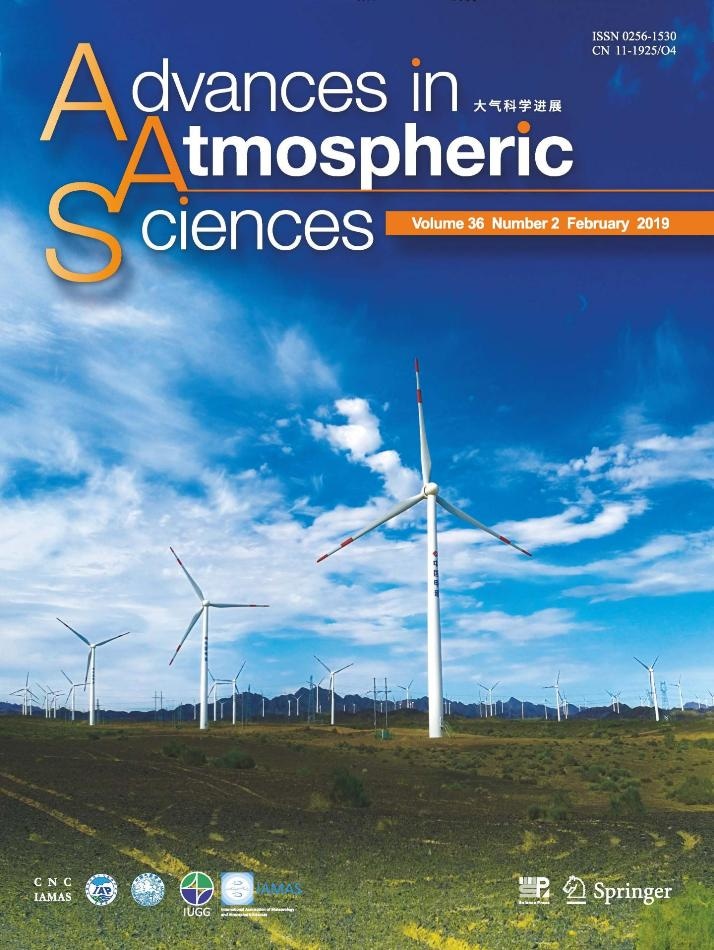Dec 14 2018
The Global Wind Energy Council reports that wind power is on track to supply nearly one-fifth of the global demand for electricity by 2050. Although wind turbines are normally considered to be a sustainable alternative to conventional energy sources, comparatively little is known about the effect they have on their immediate surroundings.
 The cover image shows terrain and vegetation type of a wind farm. (Image credit: Guo Zhenhai)
The cover image shows terrain and vegetation type of a wind farm. (Image credit: Guo Zhenhai)
A collaborative research team from Beijing, China, has been making efforts to gain better insights into the local and global impacts of wind farms by analyzing the performance of predictive models currently being used to predict their effect.
Their analysis will be published on the cover of the February 2019 issue of Advances in Atmospheric Sciences.
“Observation and modeling studies indicate that wind farms can potentially influence local weather by contributing to air turbulence and reducing wind speed downstream of the farm,” stated GUO Zhenhai, an author on the paper and a professor at the State Key Laboratory of Numerical Modeling for Atmospheric Sciences and Geophysical Fluid Dynamics of the Institute of Atmospheric Physics of the Chinese Academy of Sciences. “Direct observations are limited, though, so modeling techniques have become a valuable research tool to examine the impacts wind farms have.”
As the wind blows, the long arms of the turbine are moved. The spinning of arms causes the energy of the wind’s movement, known as kinetic energy, to be transferred to gears inside the turbine. The energy finally makes its way to a generator, where it is converted into electricity. Stronger winds help wind farms to generate even more electricity. However, with the kinetic energy absorbed by turbines, by the time the winds reach land beyond the wind farm they seem to be less powerful.
According to the researchers, a change in wind could change vital factors for agriculture in local areas, for example, the moisture levels and temperature in the air and soil. However, there is very little observable data on precisely how wind farms affect their immediate surroundings because of the sheer size of wind farms, and the variable nature of each wind speeds, topography, and other impacting variables.
Scientists usually use climate models to observe how specific parameter changes, for example, a rise in temperature, might influence rainfall in a specific area; however, these parameters are closely calibrated and validated against observable data. GUO says that the two computational models used to forecast how wind farms influence the surrounding environment do not possess the same real-world information available for the comparison of accuracy.
The two systems, known as “Weather Research and Forecasting” and “Wind Farm Parameterization,” are generally combined to better ensure similar behaviors across forecasts. With the change of parameters in different modeling scenarios, the researchers must know whether the predicted behavior is due to a new variable or a computational glitch. It is almost impossible to make such determination without proper validation.
In an attempt to gain better insights on how the models predict weather outcomes without hard data points, the researchers investigated how the resolutions of the model can be validated against itself. The resolution is the detail level of a particular study point of interest, such as precise geographic boundaries. A low geographic resolution model could run simulations of wind impact for more than hundreds of miles; however, with high resolution, the simulations could be narrowed down to more precise areas.
While the coupled model is used widely, it isn’t well validated because of the lack of direct observational data. In fact, in most of the studies where the coupled model is used, it is noted that the model resolutions play a major role in reproducing the few observational data sets that are available.
GUO Zhenhai, Professor, State Key Laboratory of Numerical Modeling for Atmospheric Sciences and Geophysical Fluid Dynamics, Institute of Atmospheric Physics of the Chinese Academy of Sciences.
The choice of model resolution for particular variables over others can greatly bias the results, and modeling scenarios require varying resolutions for different parameters in order to simulate real-world conditions.
GUO and his team explicitly investigated vertical and horizontal resolutions that control the way the model simulates the wind flow throughout and beyond the wind farm. They discovered that higher vertical and horizontal resolutions had an effect on the way the wind moved in simulations, and the horizontal resolution could have a considerable impact on the behavior of water vapor and surface temperature.
We need more modeling and observational study over a longer period of time and a wider range of atmospheric conditions to understand how to deploy wind energy optimally. The validation process we’ve undertaken is an important step in specifying the boundary conditions to ensure the terms of the system can currently represent the observed situation.
GUO Zhenhai, Professor, State Key Laboratory of Numerical Modeling for Atmospheric Sciences and Geophysical Fluid Dynamics, Institute of Atmospheric Physics of the Chinese Academy of Sciences.
Other contributing authors include Rajabu Mangara, a doctoral candidate affiliated with the State Key Laboratory of Numerical Modeling for Atmospheric Sciences and Geophysical Fluid Dynamics, Institute of Atmospheric Physics at the Chinese Academy of Sciences and the University of Chinese Academy of Sciences, and LI Shuanglin, who is with the Nansen-Zhu International Research Center of the Institute of Atmospheric Physics of the Chinese Academy of Sciences. This research was supported by the National Key Research and Development Program of China and the National Natural Science Foundation of China.